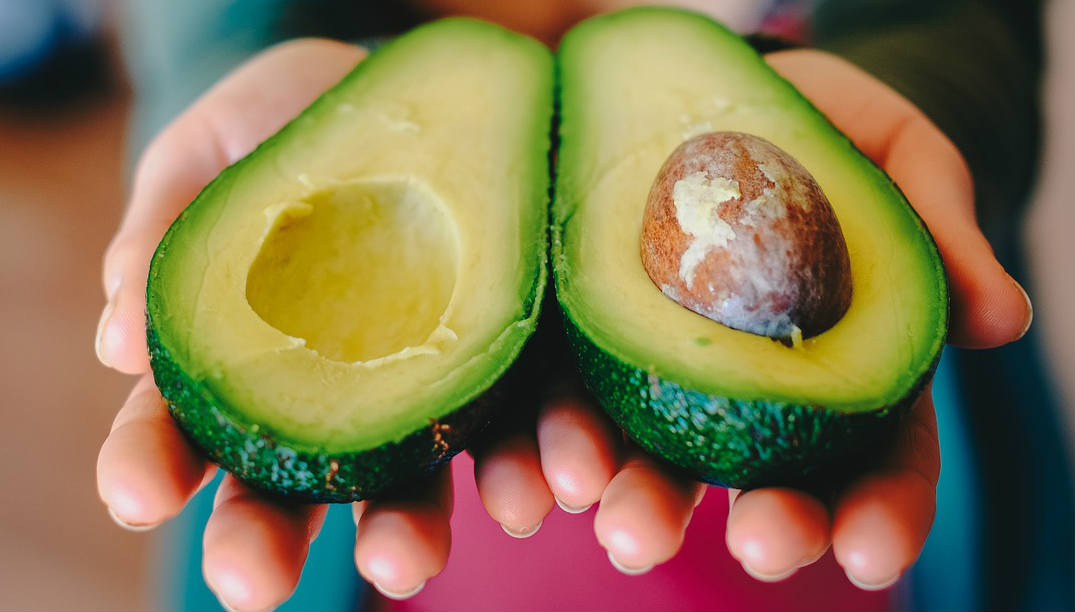
“Eat more fiber” is a common piece of advice for people who want to improve their nutrition habits. But when you’re following a low-carb eating plan, getting your daily dose of fiber can be easier said than done.
Fiber and carbohydrates often go hand-in-hand, but even if you’re following a nutrition plan that has you watching your carbs, you still have plenty of high-fiber foods available to you. Keep reading to learn more about what dietary fiber is, why it’s an important part of a healthy diet, and how you can meet your daily fiber goals without going over your carb limit.
What Is Fiber?
Dietary fiber is the indigestible part of plant foods. It passes through your body instead of being absorbed. Dietary fiber is technically a carbohydrate, but since your body can’t break it down, fiber doesn’t count towards your daily carb total.
Fiber is not found in animal source foods like meat and cheese. This can be a problem for people who are eating low-carb, especially because many high-fiber foods — such as beans, whole grains, and fruit — are loaded with carbohydrates. But it’s still important for people on a low-carb diet to work high-fiber foods into their meals. Here’s why.

Why Eating High-Fiber Foods Matters
Fiber is not technically considered an essential nutrient. Your body doesn’t absorb it, so you can’t go into a state of fiber deficiency. But if you don’t eat enough fiber on a daily basis, you can still develop health problems. Most people know that fiber helps with constipation (and that in itself is a good enough reason to eat it), but you can also reduce your risk of more serious problems simply by eating enough fiber.
Fiber is known for helping people reach and maintain a healthy weight, which cuts down on the risk of all kinds of health complications. This is because fiber is filling — it absorbs water and takes up space in the stomach. If you want to lose a few pounds without feeling hungry all the time, fiber-rich foods are your friend.
Fiber also slows down your body’s absorption of digestible carbohydrates, which keeps your blood sugar levels stable. This, in turn, reduces your risk of developing type 2 diabetes. Most people on a low-carb eating plan don’t have to worry about their blood sugar spiking, but if you’re still in the process of reducing your carb intake, high-fiber foods can help you avoid the mood swings and energy crashes that come with dips in your blood sugar levels.

Fiber is also great for gut health. It reduces your risk of developing colorectal cancer, and it’s a food source for the good bacteria in your gut. As fiber ferments in your digestive tract, the friendly bacteria in your gut eat it. They then produce compounds called short chain fatty acids, which protect the lining of your colon. Researchers have found that short chain fatty acids reduce your risk of developing many inflammatory diseases, including irritable bowel syndrome, Crohn’s disease, and heart disease.
The Institute of Medicine recommends women aim to get 25 grams of fiber every day, while men should aim for around 38 grams. If you’re currently eating a low-fiber diet — i.e. a diet without many green vegetables or other foods on this list — work your way up to this goal gradually. Increase your daily fiber intake by several grams (about the equivalent of a handful of almonds) a week. Your body needs time to get used to the extra fiber, or you might end up feeling bloated and uncomfortable. In addition, make sure you’re drinking plenty of water every day to prevent constipation.
So, if you’re eating low carb, what are the best high-fiber foods for you?
1. Leafy Greens
Veggies should be a major component of any low-carb diet, and leafy greens are among the best choices you can make. They’re low in calories, packed with nutrition, and endlessly versatile. There are so many varieties of leafy greens that you’re sure to find one you like. Collard greens, mustard greens, and turnip greens all boast 5 grams of fiber per cooked cup. Kale, spinach, and chard are also great sources.
Try our recipe for Spicy Kale and Cauliflower Rice.
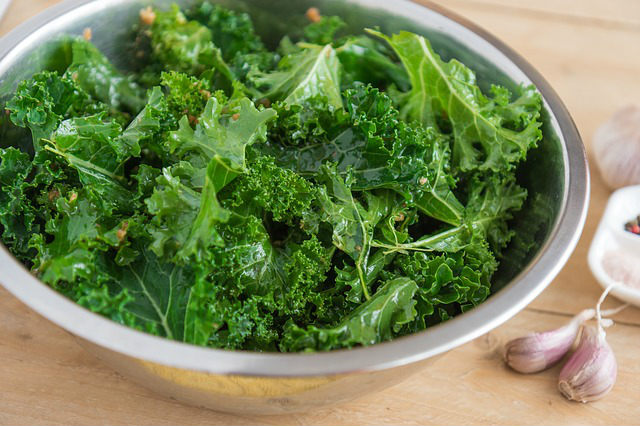
2. Flaxseeds
Flaxseeds deliver a big dose of fiber in a small package. Two tablespoons of ground flaxseeds provide 2 grams of dietary fiber for only 37 calories. Flaxseeds are also an excellent source of omega-3 fatty acids. Make sure you grind your flaxseeds before eating them so your body can access the nutrients inside them, and avoid eating more than five tablespoons of raw flaxseeds a day — they can be toxic in large doses.
3. Cabbage
Cabbage may not be the most glamorous veggie out there, but when it comes to boosting your fiber intake and adding healthy bulk to a meal, it’s hard to beat. One cup of raw, chopped cabbage contains 2.2 grams of fiber for 22 calories. You’ll also get a healthy dose of vitamin C, vitamin K, and folate.
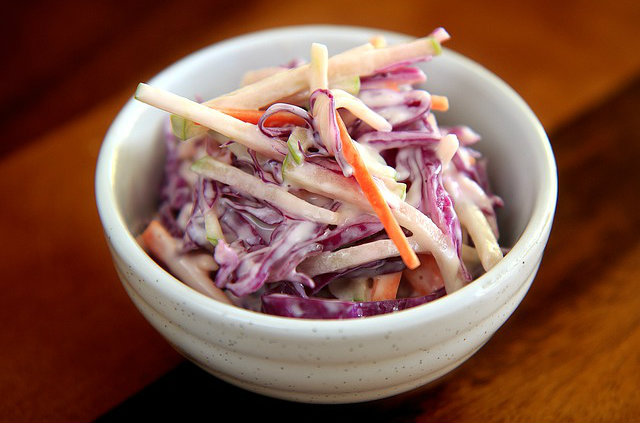
4. Coconut
Coconut, which can technically be considered a fruit, a nut, and a seed, is a great low-carb source of fiber. One cup of raw coconut meat contains an impressive 7.2 grams of fiber. And if you like to bake, coconut flour is a guilt-free alternative to traditional wheat flours — it packs 5 grams of fiber per tablespoon.
Try our recipe for Blueberry Coconut Muffins.
5. Chia Seeds
Like flaxseeds, chia seeds are small, easy to add to other foods, and rich in fiber. An ounce of chia seeds (about two tablespoons) contains 11 grams of fiber, as well as 4 grams of protein and 5 grams of omega-3 fatty acids — all for 137 calories.
Try our recipe for Coconut Milk Chia Seed Pudding.
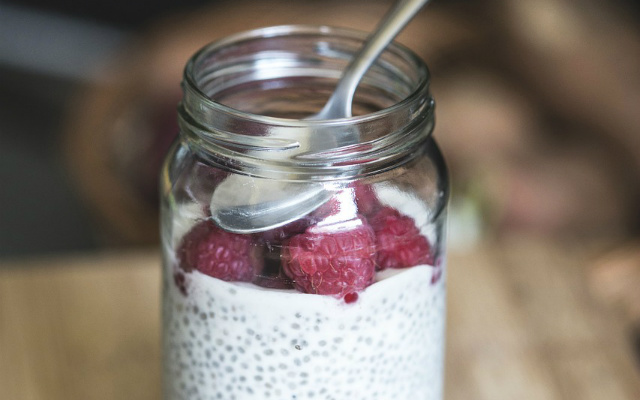
6. Avocado
Yet another reason to love avocado: it’s full of fiber. One medium-sized avocado (or one cup of cubed avocado) contains ten grams of fiber. Avocados are also full of heart-healthy fats, which promote satiety.
Try our recipe for Guilt-Free Dairy-Free Avocado Chocolate Pudding.
7. Cauliflower
Cauliflower is similar to its cousin broccoli in terms of nutrition: one cup, raw, delivers 2.7 grams of fiber for 27 calories. Cauliflower can be an excellent low-carb replacement for rice, pasta, and even pizza crust.
Try our recipe for How to Roast Vegetables the Quick and Easy Way.
8. Broccoli
Like most vegetables, broccoli is a good source of fiber, but won’t add many calories or carbs to your daily count. A cup of raw, chopped broccoli gives you 2.3 grams of fiber for 30 calories.

9. Hemp Hearts
Hemp hearts are the seeds of the industrial hemp plant. Like chia seeds and flaxseeds, hemp hearts are extremely nutrient-dense. You can buy hemp seeds whole or shelled. Whole seeds contain more fiber, but many people find them too crunchy to eat. Shelled seeds are easier to eat and still high in fiber — a two-ounce serving (about a quarter cup) contains 5 grams.
10. Nuts
Nuts are a tasty way to add fiber (as well as good fats) to your diet. Almonds are a particularly high-fiber type of nut, with 3.5 grams of fiber per ounce (or about 23 almonds). Pistachios are another good choice, with 2.9 grams of fiber per ounce.
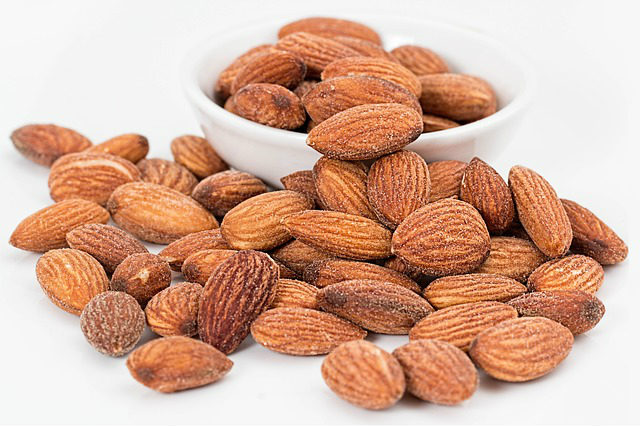
Which High-Fiber Foods Are You Going to Try?
No matter what kind of eating plan you’re following, it’s important to pay attention to your fiber intake. Eating plenty of fiber every day can lower your risk for many health problems, including type 2 diabetes and heart disease. If you’re trying to manage your weight, eating more fiber will help with that, too.
And while some high-fiber foods are also high in carbohydrates, there’s no need to sacrifice fiber if you’re sticking to a low-carb diet. By incorporating a wide variety of vegetables, seeds, and nuts into your diet, you’ll have no trouble meeting your fiber goals and carb goals at the same time.



































